SDS TEST
The SDS test is the new ground investigation method.
The SDS (Screw Driving Sounding) test is a soil classification testthat can distinguish between sand and other types ofsoil (including cohesive soil, organic soil and volcanic cohesive soil)with high probability.
The key features of the test are as follows.
- Excellent mobility
- Fully automated control offers reliability and high accuracy
- Survey data can be confirmed on-site using a mobile phone
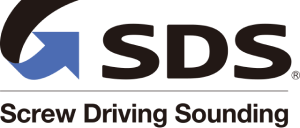
What is the SDS test?
The SDS (Screw Driving Sounding) test is a soil classification testthat can distinguish between sand and other types of soil(including cohesive soil, organic soil and volcanic cohesive soil) with a high probability.
The items below are currently being researched.
- Soilclassification
- Evaluating liquefaction potential of soil
- Estimating shear strength parameters of soil・Estimating fines content
- Estimating equivalent CPT parameters
- Estimating equivalent SPT N value
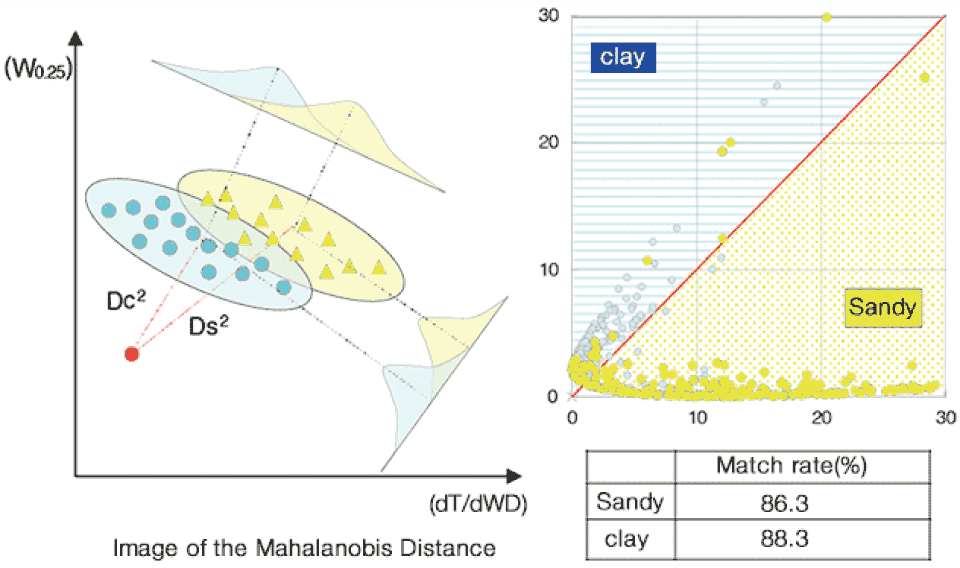
It is possible to classify soils into ‘sand’ or ‘not sand’ using both a statistical measure ‘the Maharanobis distance’ and the data obtained from the SDS results.
【SDS parameter used for statics】
- dT/dWD : correlation between rate of torque and a weighted load
- W0.25:a load needed for 25cm penetration
- 828 samples from 40 bowling test points were used for soil classification.
Figure showing the results of actually investigating the boring survey and the SDS Test at close positions.The consistency of the soil classification obtained by the boring survey and the torque value of the SDS Test can be found.
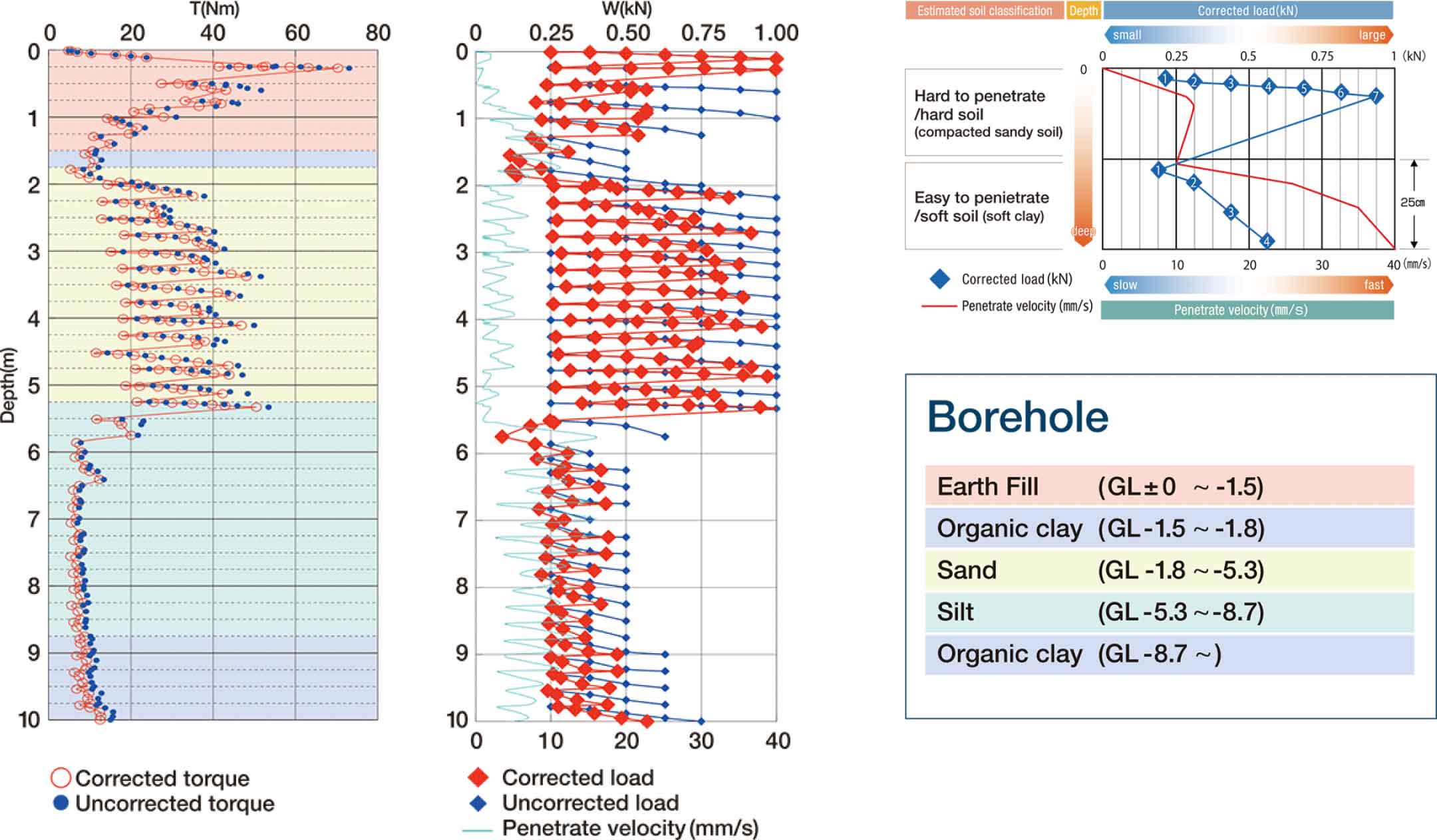
SDS Test is a relatively new method for soil characterisationwhere a machine drills a rod into the ground in several loading steps while the rod is continuously rotated.
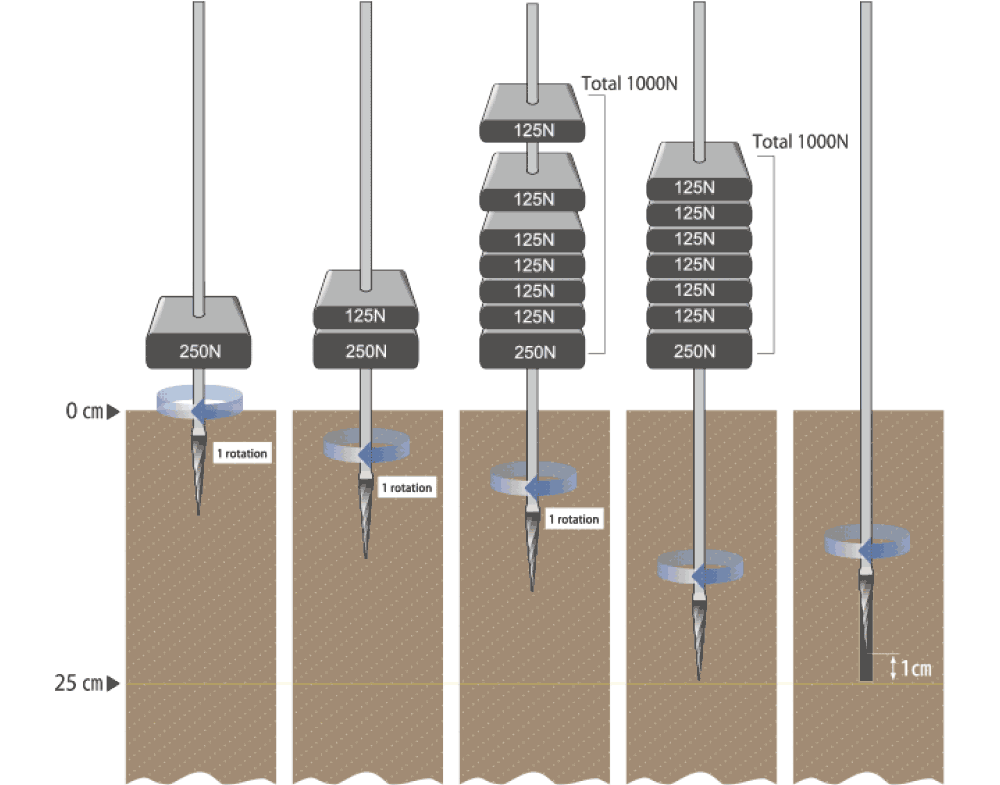
- Continuously recording the data at every rotation of rod.
- Measuring the rod friction at every 25 cm of penetration.

Measured parameters:
LoadTorquePenetration velocityAmount of penetrationRod friction
The Three Advantages of the SDS Test
01.Excellent mobility
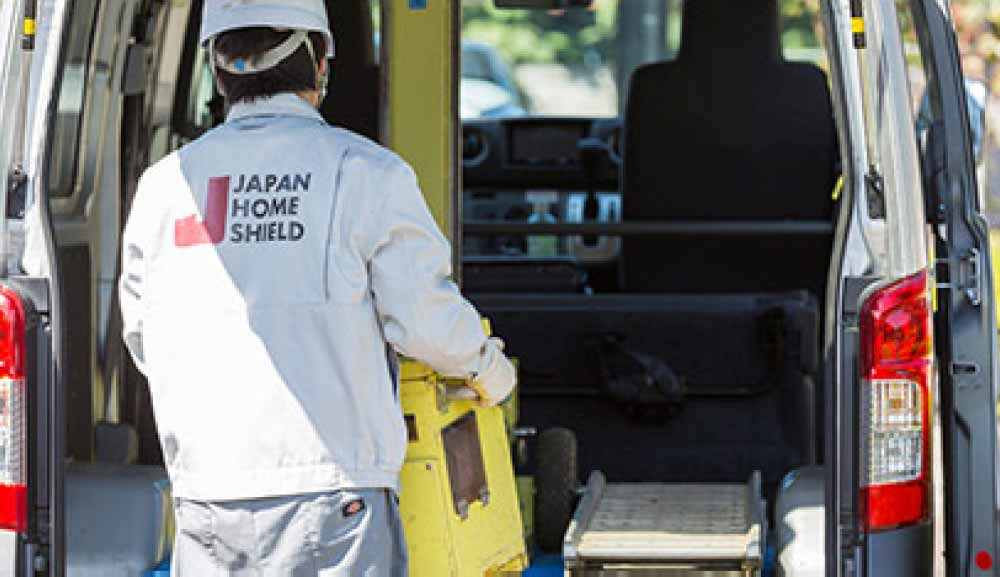
The machine can be loaded into a van for easy transportation.
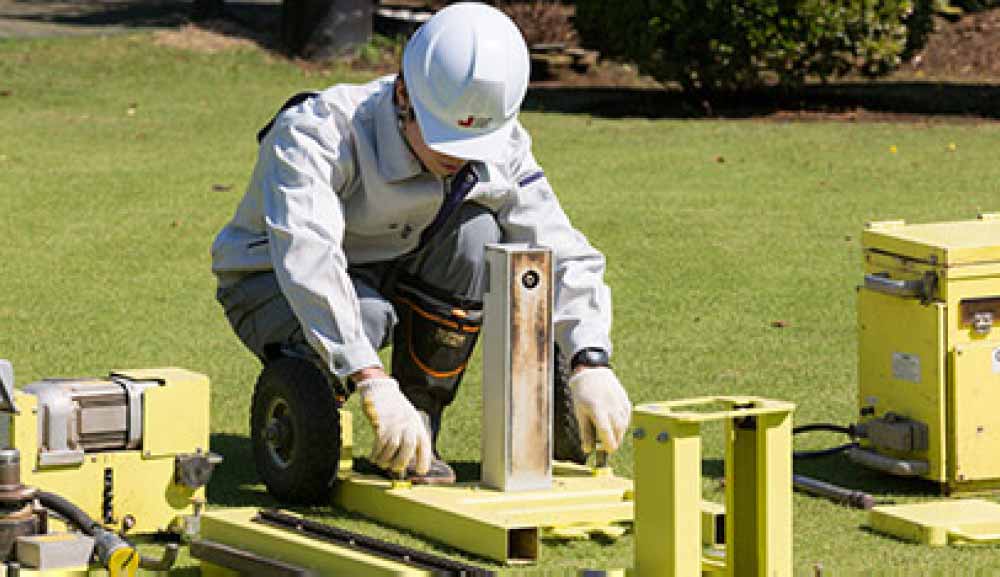
The testing machine is compact and enables even a single investigator to conduct surveys alone.

Surveys take between 30 minutes and one hour per location. This means that between five and ten locations can be surveyed per day.Under the following conditions.Alluvial clay,on the flatland,10m per investigation point.
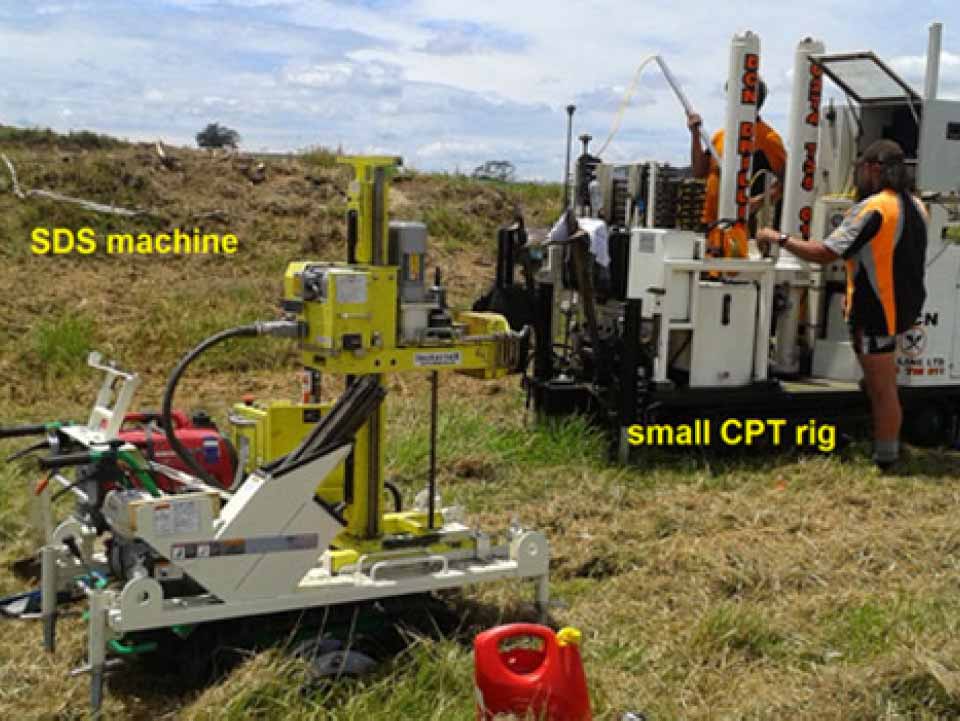
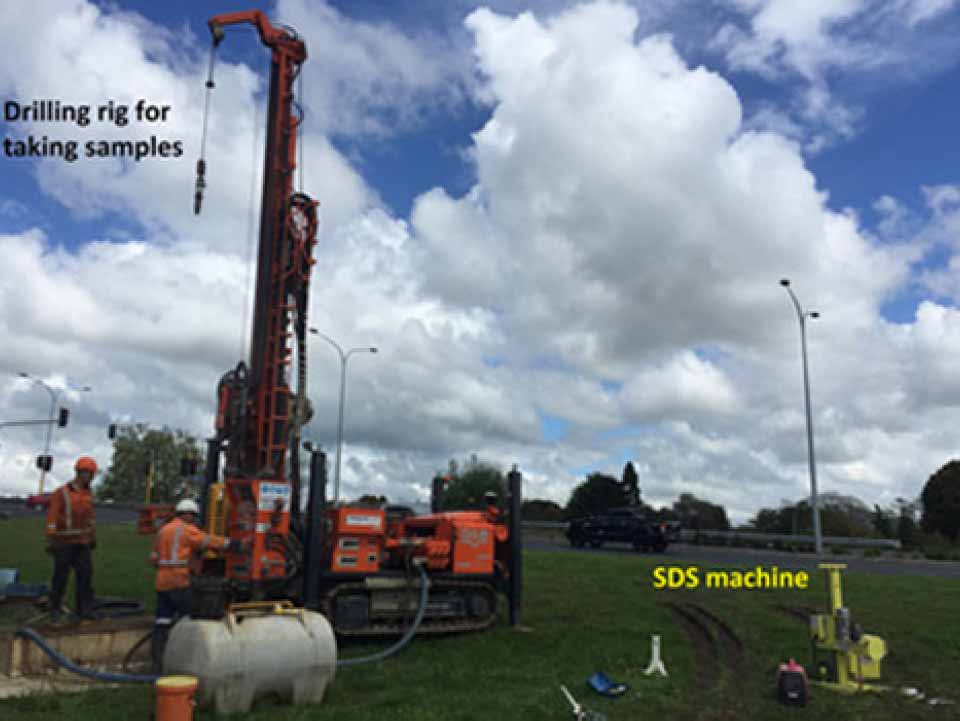
The SDS test machine is compact in comparison with those used for other ground investigations.
02.Fully automated control offers reliability and high accuracy
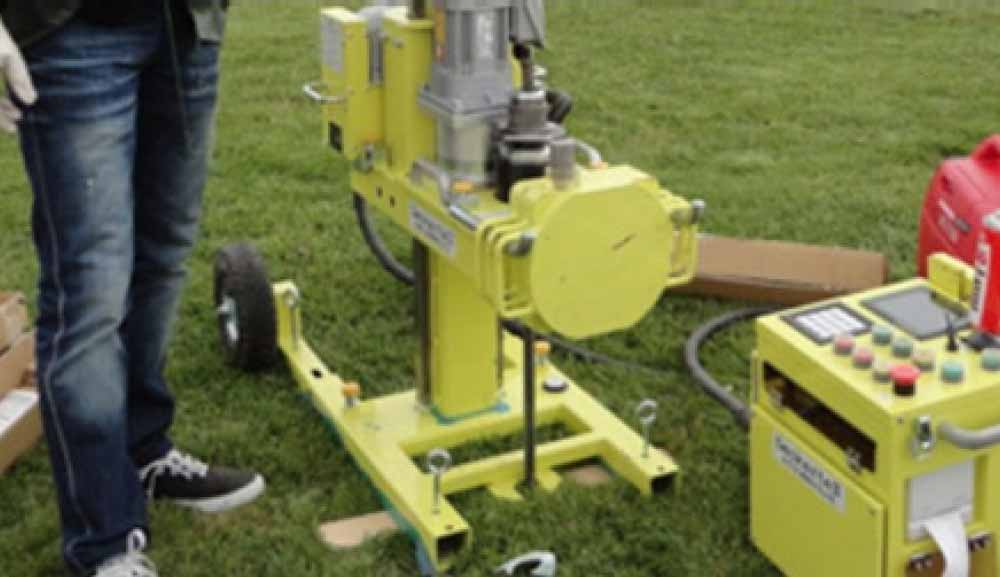
The testing machine is fully automated, preventing inconsistency of results between investigators.
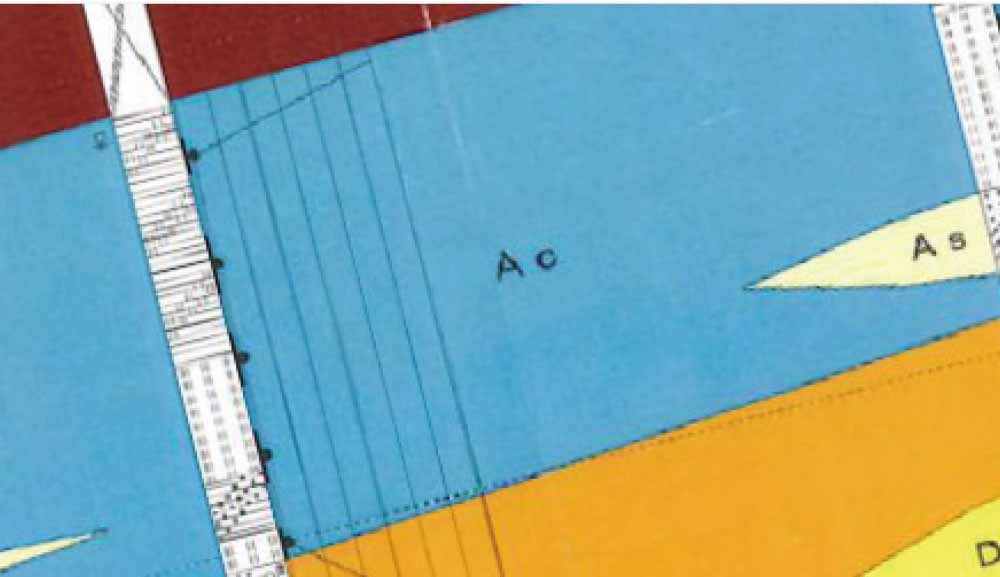
The SDS test can be used to measure various types of data.
03.Survey data can be confirmed on-site using a mobile phone
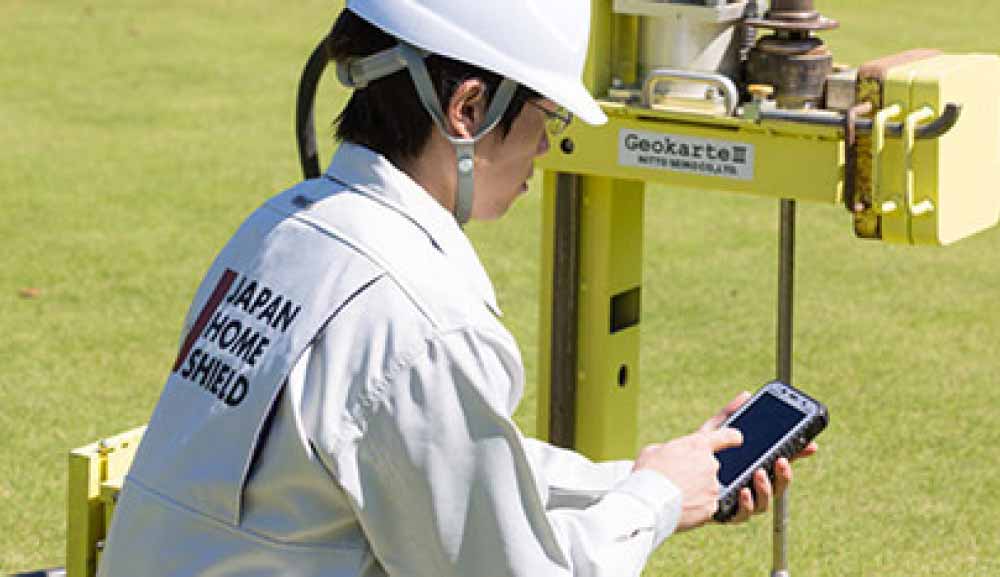
Survey data can be checked immediately on-site.
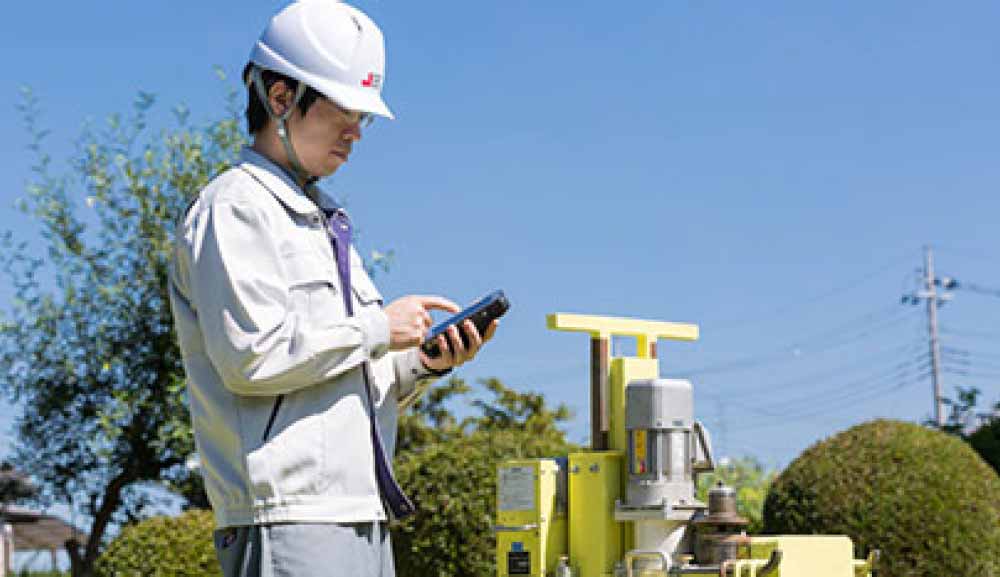
Data can be sent to the office directly from the site using a cloud-based system.
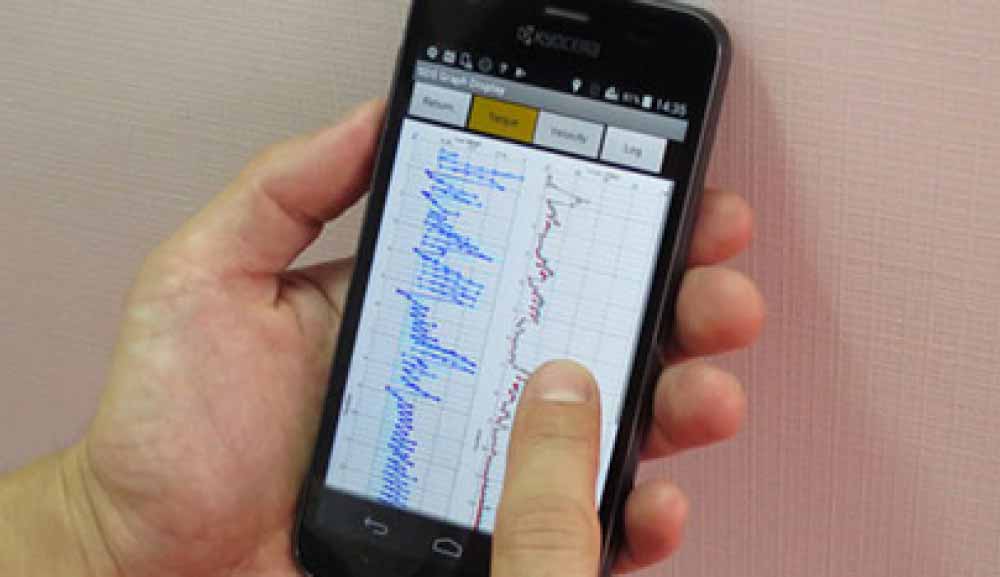
Graphs of collected data can be viewed using a mobile phone.

TSurvey locations can be pinpointed using GPS functionality.
Use of the SDS test is becoming more widespread across Japan.
Details of the SDS Test are here
More details regarding the SDS test can be downloaded by inputting the following items of information.
Technical Certifications
The SDS test has been certified
by the Center for Better Living (CBL).
http://www.cbl.or.jp/english/index.html
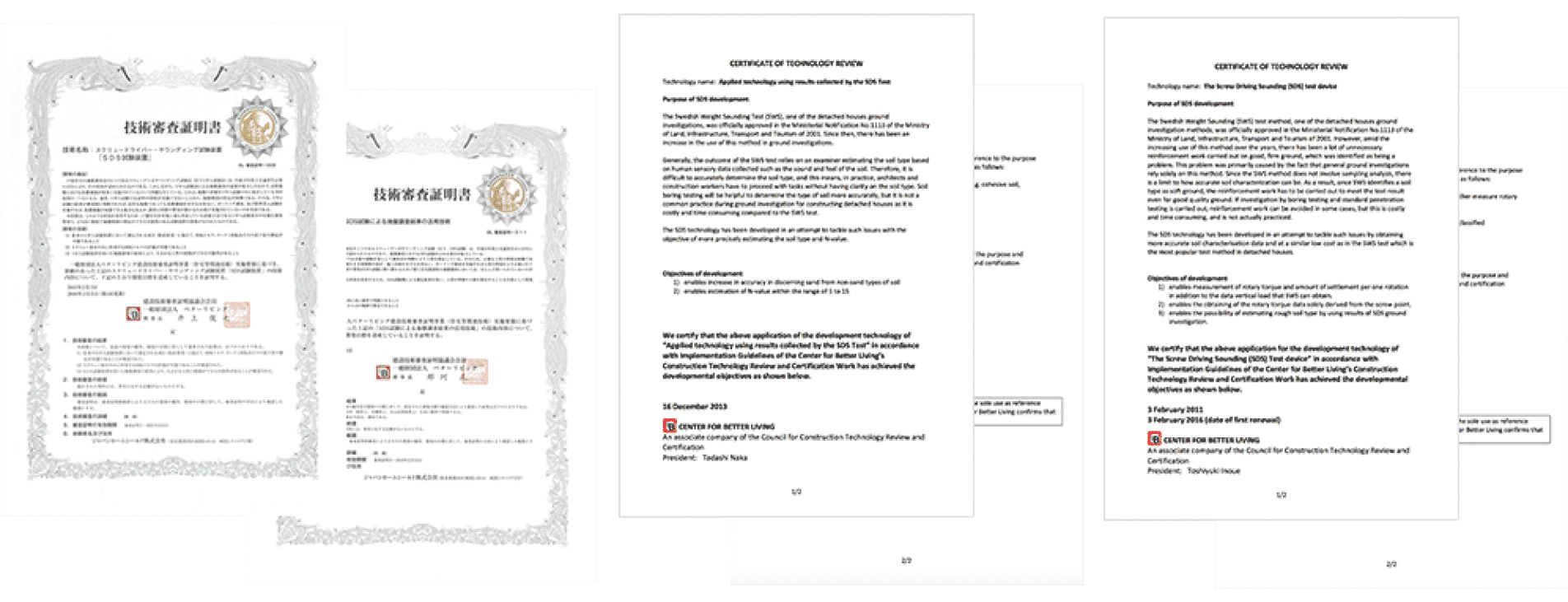
Patents Obtained
| Soil classification determination method | 6159089 |
| Estimation method of fine fraction content and N value | 6159090 |
| Penetration test method | 4705520 |
| Penetration test method | 5291329 |
| Penetration test method | 5320081 |
| Penetration rods, penetration test machine usingwith penetration rods and penetration test method | 5173731 |
| Penetration rods | 5385771 |
SDS Test Track Record in Japan
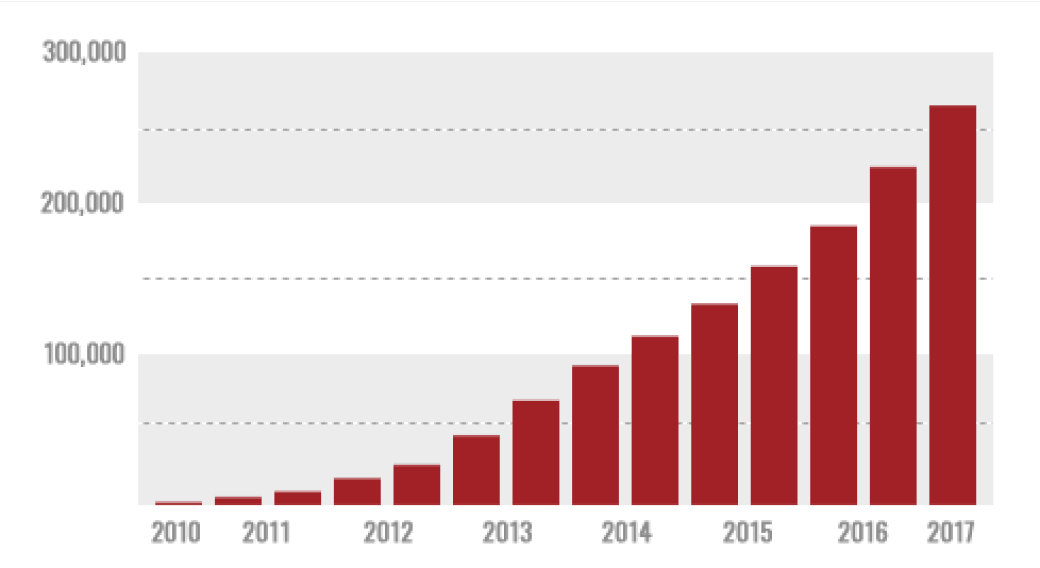
The SDS test has a track record of soil exploration surveys conducted at over 250,000 sites across Japan.
Published Research Papers, etc.
New Operation System For Swedish Weight Sounding Test
2007.7 17th ISOPE Conference
New Operation System for Swedish Weight Sounding Test Deducting
2010.6 20th ISOPE Conference
Deveropment of a New Operation System for Screwdrivier Sounding Test
2011.6 21st ISOPE Conference
Classification of strata using screwdriver sounding test
2012.6 22nd ISOPE Conference
Simple Estimation of Soil Liquefaction Using Screwdriver Sounding Test
2013.6 23nd ISOPE Conference
Evaluation of Soil Liquefaction Potential by Screw Driving Sounding Test
2014.6 24nd ISOPE Conference
Evaluation of Soil Liquefaction Potential by Screw Driving Sounding Test in Residential Areas
2015.11 6th International Conference on Earthquake Geotechnical Engineering
Assessment of in-situ liquefaction resistance of soils using Screw Driving Sounding
2015.11 6th International Conference on Earthquake Geotechnical EngineeringGeotechnical Engineering
Assessment of Soil Characteristics by Screw Driving Sounding
2015.12 International Conference on Soft Ground Engineering
Assessment of Soil Characteristics by Screw Driving Sounding
2016.6 19th Southeast Asian Geotechnical Conference & 2nd AGSSEA Conference
Assessment of Soil Characteristics by Screw Driving Sounding
2016.7 5th International Conference on Geotechnical and Geophysical Site Characterisation
The following countries are currently engaged in research and/or actual use of the SDS test.

